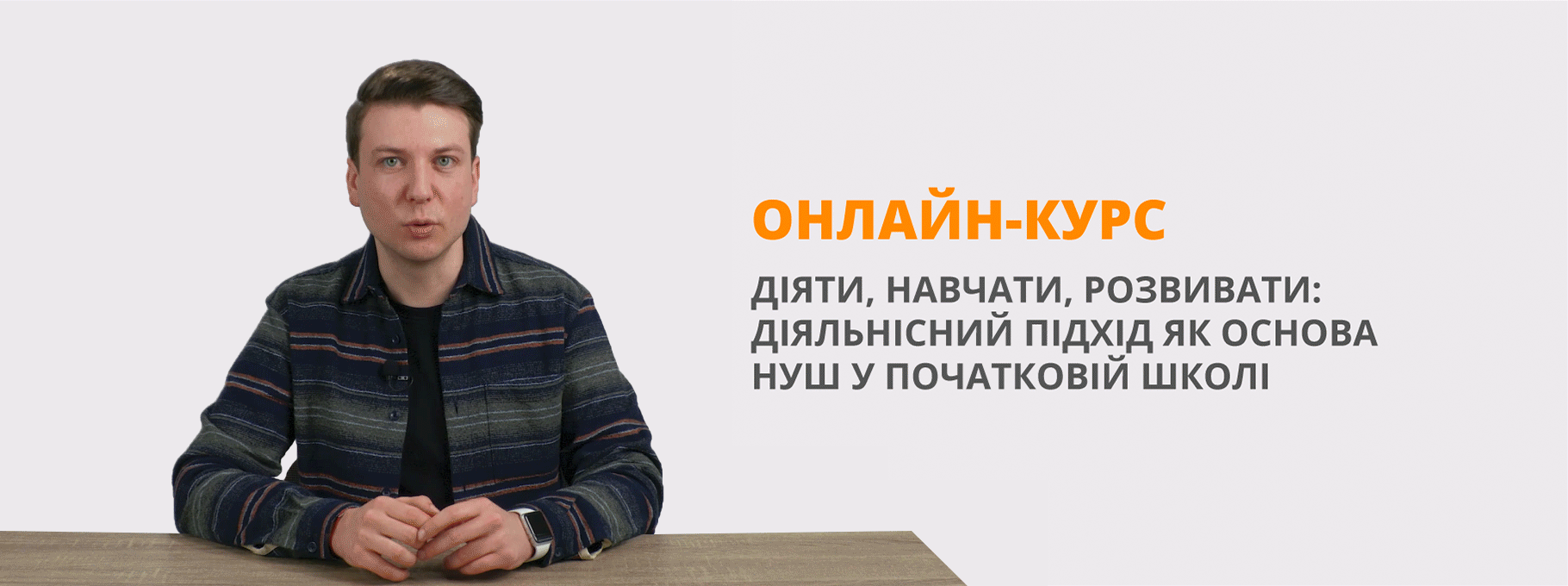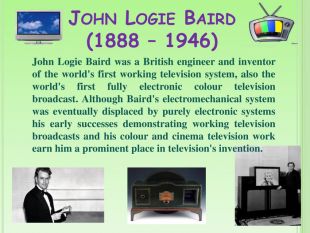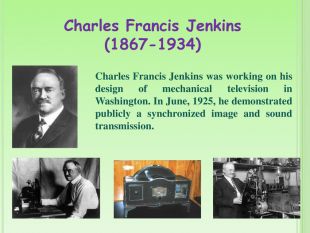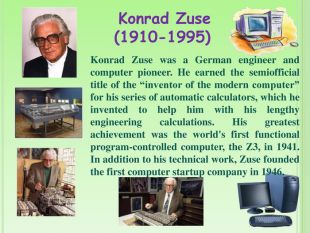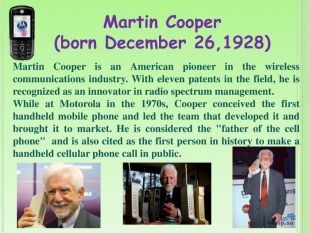Конспект Уроку для 9 класу
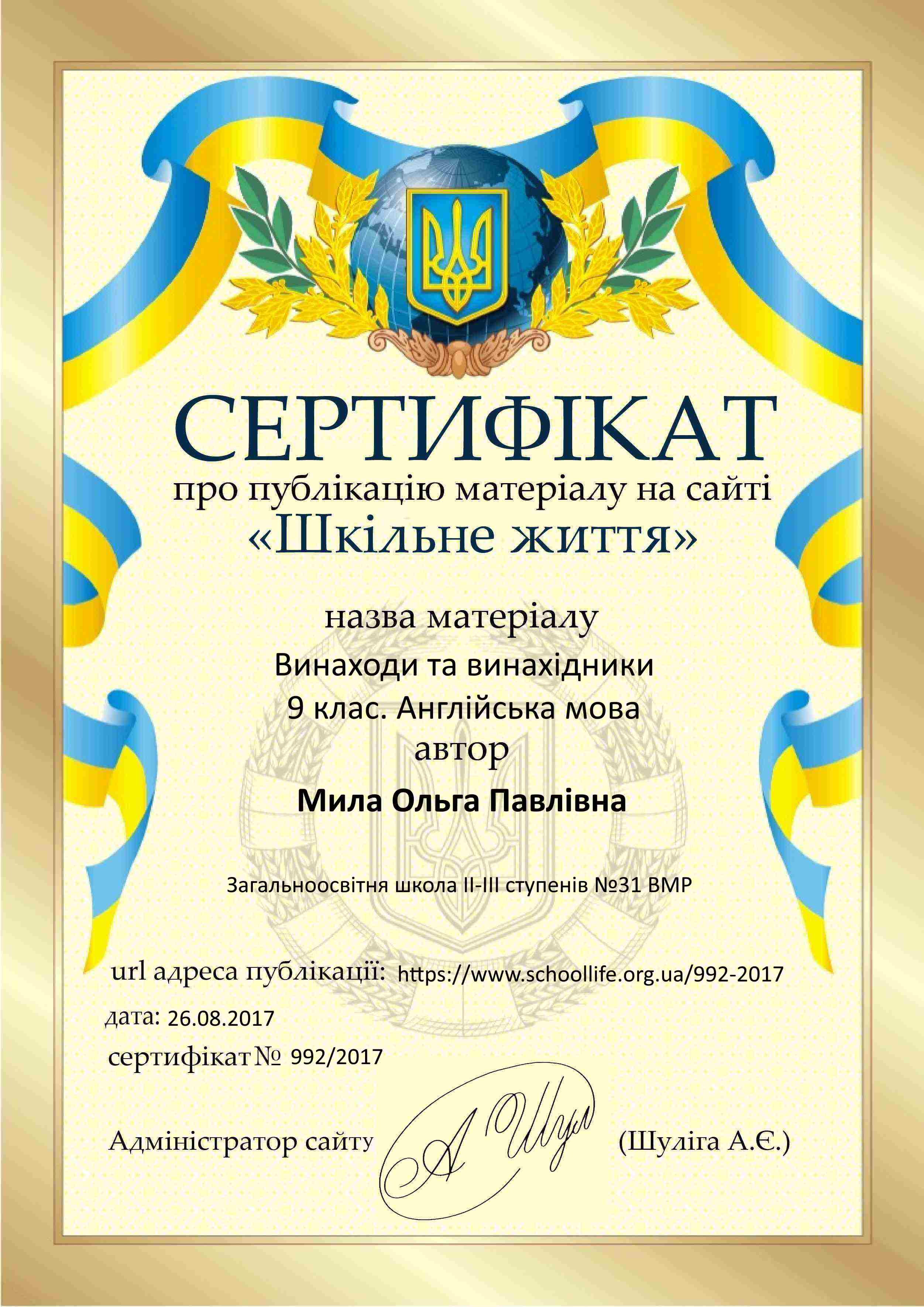
Тема: Винаходи та винахідники
Мета: - активізувати лексичний матеріал з теми у мовленні учнів;
- удосконалювати навички читання, аудіювання та усного
мовлення;
- продовжувати формувати уміння висловлювати власну думку з
приводу почутого чи побаченого;
- поглибити знання учнів про відомих винахідників та їх
винаходи;
- розвивати мовну здогадку та уміння критично мислити;
- виховувати повагу учнів до культурної спадщини різних народів та прагнення її пізнавати.
Обладнання: мультимедійна презентація у форматі Power Point,
портрети відомих винахідників, запис пісні, відеоролик
Т. Едісона, роздатковий матеріал.
Хід уроку
І. Підготовка до сприйняття іншомовного мовлення.
1.1.Організація учнів до уроку. Повідомлення теми та мети уроку.
- The topic of our today’s lesson is “Inventions and Inventors”. So you’ll learn a lot of useful information about achievements of scientists from different countries. You’ll also have plenty of practice in reading, writing, speaking and listening.
1.2. Мовленнєва розминка.
а) Робота з висловами.
- Finish the quotations and sayings of famous people:
1) Genius is one per cent inspiration and ninety-nine per cent perspiration. (T. Edison)
2) You cannot teach a man anything; you can only help him find it within himself. (Galileo)
3) It is better to understand a little, than to misunderstand a lot. (A
4) Wonders are many and nothing is more wonderful than man. (Sophocles)
5) We know what we are but we know not what we may be. (Shakespeare)
6) Imagination is more important than knowledge. (A. Einstein)
7) Men learn while they teach.
8) Train hard, fight easy.
9) Necessity is the mother of invention.
- The motto of our lesson is: “Necessity is the mother of invention.”
- How do you understand this proverb? (If someone really needs to do something, they will find a way of doing it)
- Nowadays we can even say that “Comfort is the mother of invention” because various inventions in electronics transport etc. make our life easier and more comfortable.
б) Відповіді на питання.
- What modern inventions do you have at home?
- What is the most useful thing for your mother?
- Which device can’t you do without?
- What thing can’t your father live without?
- What gadget do you use every day?
- What thing can you easily do without?
- What is the most useless thing in your household?
- What is your favourite unit and why?
II. Основна частина.
2.1. Активізація лексичного матеріалу.
- The best place to know more about great men’s inventions is, of course, the Museum of Scientific and Technological Progress. Today you’ll get acquainted with some old devices and modern ones. You’ll also try yourself as guides in such a museum.
a) - Look at the photos of these old devices. What do you think you can do with them? What do you think each one is? (The photos of telegraph, cine camera, adding machine, gramophone and crystal radio)
- Now listen and check your answers.
b) Match the early devices with the modern devices we use today.
- Adding machine CD player
- Telegraph camcorder
- Crystal radio calculator
- Gramophone digital camera
- Typewriter telephone
- Cine camera games console
- Video game DAB radio
- Instamatic camera word processor
c) Complete the sentences using these words:
- My grandparents still listen to music on an old ______________, which is about 80 years old.
- Can someone pick up the ___________, please? It’s ringing.
- “What’s that old device?” “It’s a _____________. People used it to send messages over long distances.”
- My mum hates technology. She doesn’t switch on a ________________ to type a letter. She uses an old ______________.
- Sara couldn’t add up the numbers in her head so she used a ______________.
- Martin! Turn down your ______________! How can you listen to such loud music while you are doing your homework?
- My parents got married in the 1950s. Someone had a ____________ ____and filmed the wedding.
- My brother spends hours playing video games on his ________________.
- “Look at those people surfing!” “Quick! Switch on the ______________ and record them!”
2.2. Розвиток навичок аудіювання.
a) Pre-listening activities.
- Take the stripe, read the definition of the modern device and try to guess what gadget it is.
- A piece of electronic equipment which you use to listen to programs that are broadcast, such as music and news.
- A piece of equipment used to take photographs or make films or television programs.
- A type of oven that cooks food very quickly using very short electrical waves instead of heat.
- The system of communication that you use to have a conversation with someone in another place.
- A machine for stitching cloth or clothes together.
- An electronic machine that stores information and uses programs to help you find, organize or change information.
- A machine for washing clothes.
- A large piece of electrical kitchen equipment shaped like a cupboard, used for keeping food and drink cool.
- The glass part of an electric light that the light shines from.
- A vehicle that flies in the air and has wings and at least one engine.
b) While-listening activities.
- Listen to two teenagers discussing inventions. Write down three inventions they think are the most important.
c) Post-listening activities.
- Write down three inventions that you think are the most important for the humanity. Explain your choice.
2.3.Розвиток навичок усного мовлення. Презентація повідомлень учнів.
a) - Now you’ll pretend to be museum guides. You’ll present the information about famous inventors you have found. It was your homework. (Children speak about A. G. Bell, J. N. Niepce, A. Fleming.)
b) Relaxation
- Let’s have a rest and sing a song about one imaginative invention of “The Beatles”– “Yellow Submarine”.
c) Information about Thomas Edison.
- T. Edison is one of those inventors who got more patents than the others.
- - Read the text about this famous inventor, put the paragraphs in the correct order and think of the title of the text. Guess if the sentences are true or false.
- - Watch the video about T. Edison and say why this inventor was called The Wizard of Menlo Park. Answer the questions:
- How long did Edison go to school?
- Who taught him everything he needed to know?
- When did he sell his first invention?
- How many inventions did he patent during his life?
- What is Edison’s greatest idea?
- How long did his light bulb burn?
- What other famous inventions did he create?
d) Information about J. Baird, Ch. Jenkins and S. Korolyov.
e) Work in pairs. Game “Pros and cons”.
- You’ll get some statements about modern inventions. You’ll work in pairs. One of you should think of some advantages of this fact, the other should think of its disadvantages. You have a few minutes for discussion.
- Modern technologies damage our environment;
- The development of computer technologies has changed our lives;
- Electric devices make our life easier;
- Television influences our everyday life;
- Mobile phones make our communication more comfortable;
- Our life would be much healthier without cars;
- We can’t imagine our life without electricity.
f) Information about K. Zuse, B. Gates and M. Cooper.
g) Information about J. Gorrie and J. M. Spangler.
III. Заключна частина.
3.1. Домашнє завдання.
- People have invented a lot of useful things to make their life more comfortable. Almost every day a new technique or product appears in the world. But we always need something more useful, more effective and more comfortable. I’m sure you’ll like your hometask. I want you to write a composition “What invention would you like to invent?”
3.2. Підсумок уроку.
- And now I want to know what you think about our today’s lesson. Was it useful? Did you feel comfortable? Did you like it?
- Your marks are…
Put the paragraphs in the correct order. Think of the title of the text.
The inspector went up to the boy and shook him. Edison awoke. He was told that he had lost his job. This story explains why the first of Edison’s many inventions was never patented.
When Edison was a boy of 15, he worked as a telegraph operator. He had to be on duty at night, from 7 o’clock in the evening till 7 o’clock in the morning. But at night there was never much work and the telegraph operators usually slept. So boss ordered each operator to give a signal every hour to show that he was awake. Edison’s signals always came at the same time, at the beginning of each hour. That surprised the boss.
So one night he sent an inspector to see how well the boy was working. When the inspector opened the door, he saw Edison sleeping in his chair. The inspector was going to shake the boy when he saw a block with a mechanism in the table near the telegraph apparatus. He waited to see what would happen. When the hand of the clock pointed to the hour, the mechanism began to work and sent a signal.
Are these statements true or false?
- When Edison was a boy of 15, he worked as a telegraph manager.
- But at night there was much work and the telegraph operators usually worked hard.
- So boss ordered each operator to give a signal every 10 minutes to show that he was awake.
- Edison’s signals always came at the same time, at the beginning of each hour.
- One night the boss sent his mother to see how well the boy was working.
- When the inspector opened the door, he saw Edison sleeping in his chair.
- The inspector saw a block with a mechanism in the table near the telegraph apparatus.
- The inspector wanted the boy to show how the mechanism could work.
- Edison awoke and was told that he had lost his job.
- This story explains why the first of Edison’s inventions was patented.


про публікацію авторської розробки
Додати розробку
